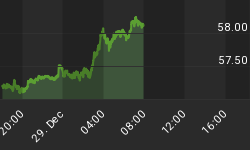
Major market indices (S&P 500, Dow Jones Industrial) are currently closing on the highest level for the year almost day-to-day. With respect to historical occurrences and respective probabilities and odds, this will probably have positive implications looking out 1 - 5 trading days.
Table I below shows all occurrences and the Dow Jones Industrial's historical performance (since 01/01/1902) over the course of the then following 1, 3 , 4 and 5 sessions (and the minimum number of sessions - if any - until a higher close was achieved), assumed one went long on close of the last session immediately preceding the Christmas Day (exchange) holiday (like on Thursday, December 23) where the Dow Jones Industrial closed at the highest level of the running year at least once during the last four sessions immediately preceding Christmas Day.

(* no close below trigger day's close during period under review)
It is interesting to note that the Dow Jones Industrial
- ... closed at a higher level at least once over the course of the then following 5 sessions on all 12 occurrences;
- ... closed at a higher level 2 and 3 sessions later on 10 out of those 12 occurrences;
- ... closed at a higher level 5 sessions later on 11 out of those 12 occurrences; and
- ... never closed lower -0.87% or more below the trigger day's close at any time during the then following 5 sessions.
The Dow Jones Industrial is currently up +7.15% on the 4th quarter, up +18.27% on the past 6 month and up +10.18% on the year which might have positive implications for January 2011 and Q1 2011 as well.
Table II shows the date of the last session of the month ('End-of-Month Day'), the Dow Jones Industrial's historical (since 1902) performance ('Monthly Returns') in January, the respective number of sessions (during the month), and the maximum gain and the maximum loss (drawdown) where the Dow Jones Industrial was up gt. +5.0% on the 4th quarter, up gt. +10.0% on the last 6 month (semiannual) and up gt. +10.0% on the year on the last session of the previous year in the past.

When the Dow Jones Industrial closed out the year with strong gains on the last quarter, the last 6 month and the year as well, this had positive implications for the index' performance in January of the next year as well. The Dow Jones Industrial closed out the then following January with a gain on 16 out of 22 occurrences (or 81.82% of the time), significantly better than the random chance of 57.34% for a positive month, and posted a median monthly gain of +1.67%, twice the at-any-time median monthly return of 0.82%.
In addition (but not shown), the Dow Jones Industrial closed out the first quarter of the then following year (in this event Q1/2011) with a gain on 9 out of the last 11 occurrences, never closed lower less than -0.92% on the last session of the first quarter of the then following year (in this event March 31, 2011) on any of the last 11 occurrences, and never closed lower less than -4.98% below the previous year's close at any time during the first quarter on any of the last 11 occurrences, but gained +5.00% or more at least once during the first quarter on 7 out of the last 11 occurrences. And those two outlier in 1916 and 1939 happened during World War I and shortly before World War II broke out.
Conclusions:
Right at the start of the next year, and in addition to the FED's ongoing (daily) injection of liquidity and positive seasonalities like the 3rd year of the Presidential Cycle (see The Third Year of the Presidential Cycle), historical probabilities and odds are tilt in favour of a continuation of the recent run-up in the markets at least during January 2011 (or at least downside potential might be limited).
Successful trading,
















